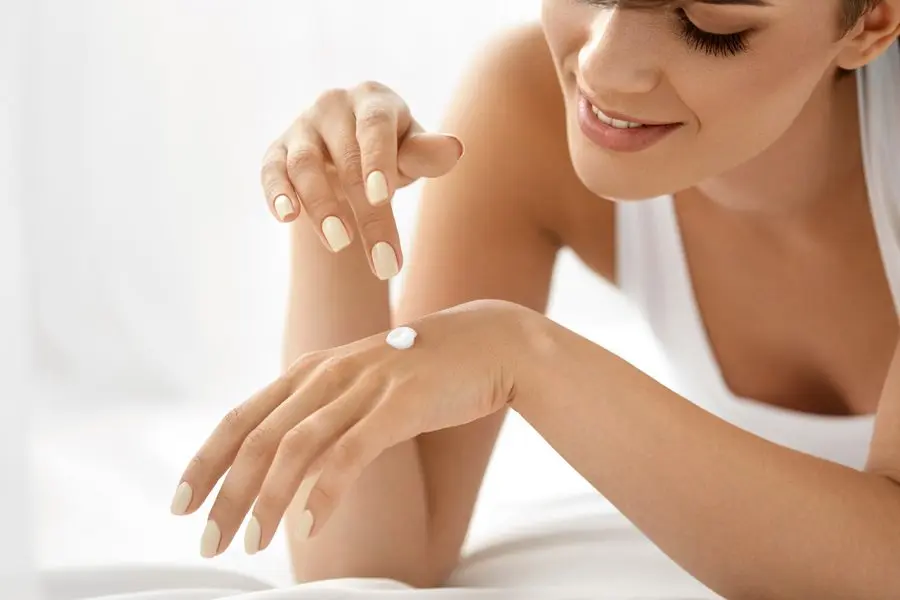
Explaining Atmospheric Aging: Why It's Time to Use Antioxidants in Your Daily Life
Contents:
For years, we've been calling the sun public enemy number one when it comes to our skin. Responsible for skin care issues ranging from the visible signs of skin aging—read: wrinkles and dark spots—to sunburn and some skin cancers, the sun's harmful UV rays can wreak havoc. But did you know that the sun isn't the only environmental factor we need to worry about? Ozone at ground level - or O3Pollution has also been shown to contribute to the visible signs of premature skin aging and is called atmospheric aging. Below, we detail atmospheric aging and how antioxidants can be your best ally in the fight against it!
What is atmospheric aging?
While the sun is still one of the main causes of visible premature skin aging, atmospheric aging — or aging caused by ground-level ozone pollution — definitely makes the list. According to a study published by Dr. Valakki, ozone pollution can oxidize lipids and deplete the skin's natural stores of antioxidants, which can subsequently lead to visible signs of skin aging, including fine lines, wrinkles, and skin laxity.
Ozone is a colorless gas that is classified as "good" or "bad" depending on its location in the atmosphere. Good ozone is found in the stratosphere and helps create a protective shield against ultraviolet rays. Bad ozone, on the other hand, is tropospheric or ground-level ozone and can lead to premature skin damage. This type of ozone is created by chemical reactions between sunlight and nitrogen oxides and volatile organic compounds that result from pollution created by car emissions, power plants, cigarette smoke, gasoline, the list goes on…and on.
What does all this mean for the appearance of your skin? In addition to visible signs of premature skin aging, ground-level ozone pollution has been shown to cause marked skin dehydration, increased sebum production, increased skin sensitivity, and decreased vitamin E.
How Antioxidants Can Help Protect Your Skin
Wanting to address this growing skincare problem, SkinCeuticals partnered with Dr. Valakki to study the effects of ozone pollution on living skin. As a result of the research, an excellent tool has been found to help protect your skin surface from pollution and, therefore, from atmospheric aging. In fact, this tool may already exist in your current skincare routine: products containing antioxidants! SkinCeuticals antioxidants in particular have been shown to help neutralize free radicals on the surface of the skin to reduce skin exposure to ozone.
In a one-week clinical study, the brand and Dr. Valacci followed 12 men and women who were exposed to 8 ppm ozone for five days for three hours each day. Three days prior to exposure, subjects applied SkinCeuticals CE Ferulic—a favorite vitamin C serum among editors and experts—and Phloretin CF to their forearms. The product was left on the skin for three hours, and the subjects continued to apply serums daily throughout the study.
what can you do
If you haven't already, it's time to use products with antioxidant formulas like CE Ferulic or Phloretin CF in your daily skincare routine. But for maximum benefit, you need to use these antioxidants in tandem with a broad-spectrum SPF to protect your skin from both atmospheric aging and sun damage.
This combination is considered a dream team in any skin care regimen. “Antioxidants work great [in tandem with sunscreen] to prevent future skin damage and scavenge free radicals—vitamin C does that especially,” explains Dr. Michael Kaminer, board-certified dermatologist, cosmetic surgeon and Skincare.com expert consultant. “So using sunscreen to help block the damaging effects of the sun and then having an antioxidant insurance plan to filter out any damage that actually seeps through the sunscreen is ideal.”
Step 1: Antioxidant Layer
After cleansing, use a product that contains antioxidants - some well-known antioxidants include vitamin C, vitamin E, ferulic acid, and phloretin. SkinCeuticals CE Ferulic is for dry, combination and normal skin, while Phloretin CF is for those with oily or problematic skin. Here we share more tips on how to choose the best SkinCeuticals antioxidants!
Step 2: A layer of sunscreen
The golden rule of skincare is to never skip applying a broad-spectrum sunscreen, that is, protection from both UVA and UVB rays, SPF sunscreen. Whether it's a warm sunny day or a cold rainy mess outside, the sun's UV rays work, so using sunscreen is non-negotiable. Moreover, you must remember to reapply regularly throughout the day! We love SkinCeuticals Physical Fusion UV Defense SPF 50. This physical sunscreen contains zinc oxide and a sheer shade - perfect if you want to forgo foundation!
Leave a Reply